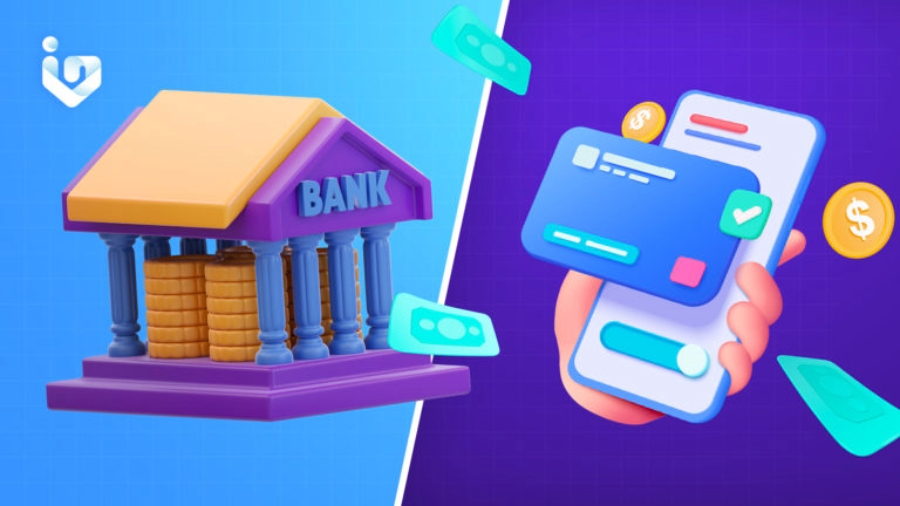Modern Banking – Navigating the Financial Frontier
In today’s fast-paced world, Modern Banking – Navigating the Financial Frontier has evolved beyond recognition. Gone are the days of waiting in long queues at brick-and-mortar banks or poring over paper statements. The digital age has ushered in a revolution in modern banking, transforming the way we manage our finances. This blog explores the dynamic landscape of modern banking, examining its key features, the role of technology, and its impact on our financial lives.
The Digital Transformation
Modern banking is characterized by its digital transformation. A few decades ago, traditional banks ruled the financial sector. However, the rise of technology has given birth to a new breed of banks known as neo-banks or digital banks. These institutions operate exclusively online, offering customers a seamless, paperless banking experience.
Key Features of Modern Banking
Convenience: One of the most significant advantages of modern banking is convenience. With a smartphone and an internet connection, you can access your bank account 24/7, from anywhere in the world. Gone are the days of rushing to the bank before closing time.
Online Banking: Online banking is the cornerstone of modern banking. It allows you to check your account balance, transfer funds, pay bills, and even apply for loans from the comfort of your home.
Mobile Banking Apps: Mobile apps have revolutionized the way we interact with our banks. Banking apps provide an intuitive interface for managing your finances on the go. From depositing checks by taking photos to receive real-time transaction notifications, these apps have become indispensable.
ATMs: While traditional ATMs have been around for a while, modern banking has seen the rise of smart ATMs. These machines can perform a wide range of tasks, including cash withdrawals, deposits, and even currency exchange.
Contactless Payments: The era of swiping credit cards is giving way to contactless payments. With near-field communication (NFC) technology, you can make secure payments by simply tapping your card or smartphone on a point-of-sale terminal.
Robo-Advisors: For investment enthusiasts, modern banking offers robo-advisors. These automated platforms use algorithms and AI to create and manage investment portfolios, making investing more accessible and affordable.
The Role of Technology
Technology is the driving force behind modern banking. Here’s how it’s shaping the industry:
Artificial Intelligence (AI): AI is transforming customer service. Chatbots and virtual assistants provide quick responses to inquiries and assist with routine tasks, enhancing the overall customer experience.
Machine Learning (ML): ML algorithms analyze vast amounts of data to assess credit risk, detect fraud, and personalize banking services. This improves decision-making and safeguards against financial threats.
Blockchain: Blockchain technology underpins cryptocurrencies like Bitcoin and Ethereum. While not mainstream yet, blockchain has the potential to revolutionize how transactions are recorded and verified.
Impact on Our Financial Lives
Modern banking has a profound impact on our financial lives:
Financial Inclusion: Online and mobile banking have made financial services accessible to millions who were previously excluded from the traditional banking system. This fosters financial inclusion and economic growth.
Personal Finance Management: Modern banking offers tools to help individuals manage their finances better. From budgeting apps to expense tracking, these tools empower people to make informed financial decisions.
Speed and Efficiency: Transactions that once took days can now occur in seconds. This speed and efficiency have made commerce more fluid and responsive.
Global Connectivity: With modern banking, you can effortlessly manage international transactions, send money abroad, and invest in foreign markets.
Enhanced Security: While cybersecurity is a concern, modern banking also provides advanced security features like biometric authentication and multi-factor authentication to protect your assets.
Customer experiences that technology has changed in banking forever
- No more queuing
People over 30, would probably spend hours in interminable bank queues over lunchtimes or on a Saturday morning, to withdraw money or pay in a cheque. Banks have leaped on the opportunities offered by online – and now mobile – banking. It’s possible to do everything online, from simple transactions to complicated issues such as applying for a mortgage.
- One quick tap and you’re done
Although Mobil first issued contactless cards for customers to use at their petrol stations in the US as early as 1997, the very first contactless cards associated with banks were given out by Barclaycard in 2008. Now there are well over 32 million in circulation in the UK. By 2011, mobile technology had merged with contactless, and the first wave of apps that allowed their owners to pay by tapping the phone against the terminal was born. Google Wallet is now one of the most popular in the world, allowing users to store debit, credit, loyalty gift, and store cards on their phones.
- Cybersecurity and data protection
Keeping financial information safe is one of the biggest areas of investment for banks, and it is also a responsibility for customers. Easy passwords, public computers, and “phishing” scams are some of the most common ways we are separated from our money. And this is also been sorted out with the 2-step authentication for our online transactions.
- A different sort of customer service
Online banking and mobile banking mean that generic customer services are no longer needed. Customers expect a more tailored and personalized experience when they – on rare occasions – need to contact their bank by phone chat, or even in person at a branch.
Conclusion
Modern banking is a testament to the power of technology to reshape industries. It has made banking more accessible, efficient, and convenient than ever before. While challenges remain, the benefits of modern banking are undeniable. As technology continues to advance, we can expect even more innovations in the financial sector, further enhancing our ability to manage and grow our wealth. In this digital era, embracing modern banking is not just an option; it’s a necessity for anyone looking to thrive in the financial frontier of the 21st century.
Source

